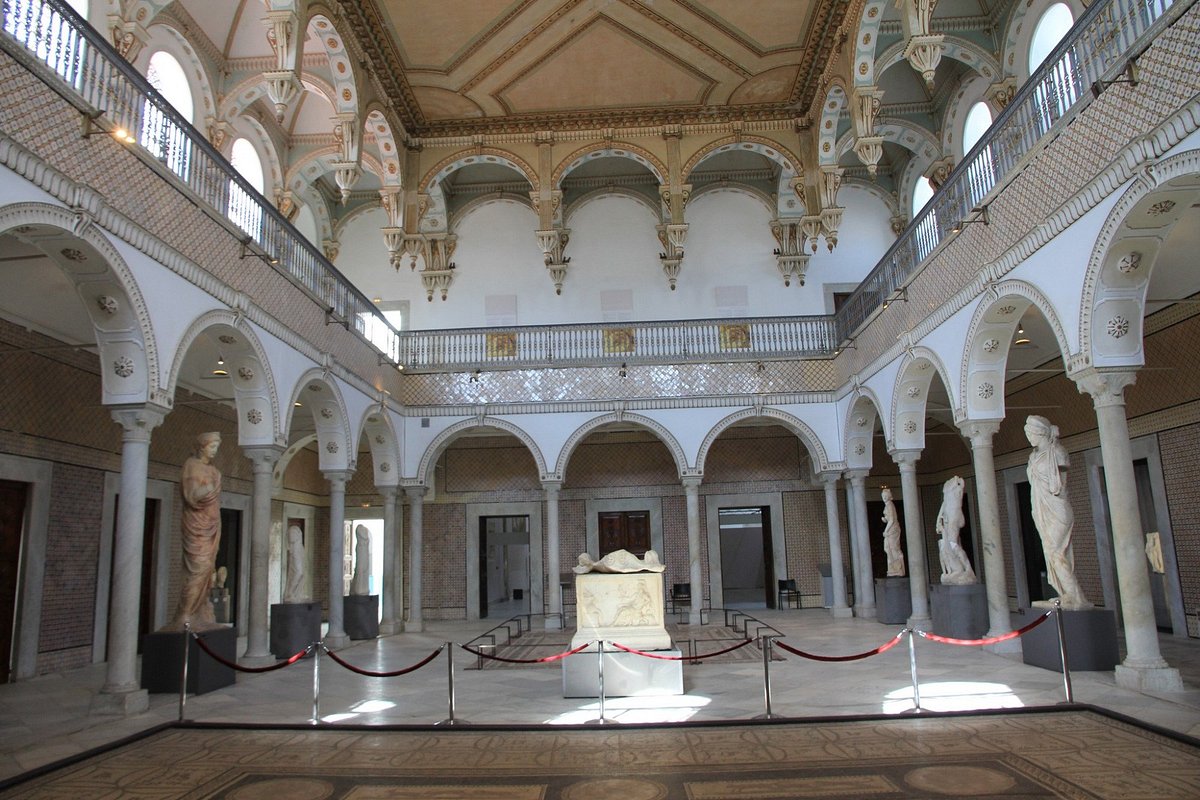
The Medina of Tunis is a UNESCO World Heritage site and is one of the largest and best-preserved medieval cities in the Arab world. This labyrinth of narrow streets and alleyways is home to over 700 monuments, including palaces, mosques, mausoleums, and fountains. Be sure to check out the Zitouna Mosque, one of the most important mosques in Tunisia, and the Dar Ben Abdallah Museum, which provides a glimpse into the traditional Tunisian way of life.
The Bardo National Museum is home to the world's largest collection of Roman mosaics, as well as a vast array of other artifacts from Tunisia's rich history. The museum is housed in a beautiful 13th-century palace, making it a cultural attraction not to be missed. Be sure to check out the mosaics from the ancient city of Carthage and the Roman mosaics from the villas of Sousse and El Djem.
The Cathedral of St. Vincent de Paul is a beautiful example of Christian architecture in Tunisia. The cathedral was built in the late 19th century and is dedicated to St. Vincent de Paul, the patron saint of charity. The cathedral features a mix of Romanesque, Byzantine, and Moorish architectural styles and is a must-visit for anyone interested in religious history.
The National Museum of Tunisian Art is housed in a beautiful 18th-century palace, the Dar Khechine, and features a vast collection of Tunisian art from the 16th to the 20th centuries. The museum's collection includes paintings, sculptures, ceramics, and textiles, and provides a glimpse into the country's rich cultural heritage. Be sure to check out the museum's collection of works by renowned Tunisian artists, such as Yahia Turki and Zoubeir Turki.
The Sidi Bou Said neighborhood is a picturesque village located on a hill overlooking the Mediterranean Sea. The village is known for its blue and white buildings, cobbled streets, and stunning views. Be sure to check out the Ennejma Ezzahra Palace, a beautiful 18th-century palace that now serves as a museum, and the Dar el-Annabi Museum, which provides a glimpse into traditional Tunisian life.
1. What is the best time to visit Tunis?
Tunis is a year-round destination, but the best time to visit is during the spring (March-May) and fall (September-November) when the temperature is mild and the crowds are smaller.
2. Is Tunis safe for tourists?
Tunisia is generally safe for tourists, but it is always a good idea to exercise caution and stay aware of your surroundings. Be sure to check the latest travel advisories before planning your trip.
3. What language is spoken in Tunis?
The official language of Tunisia is Arabic, but French is also widely spoken. Many Tunisians speak English as well, especially in tourist areas.
We hope that this article has inspired you to discover Tunis and its rich cultural heritage. From the ancient ruins of Carthage to the vibrant markets of the Medina, Tunis is a city that will capture your heart and imagination. Be sure to check out the top 5 cultural attractions that we have covered in this article and experience the best of what Tunis has to offer.